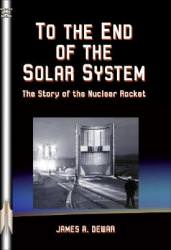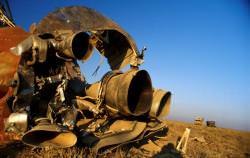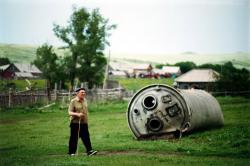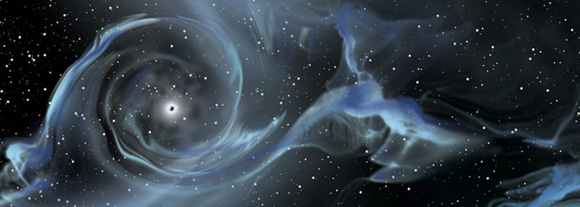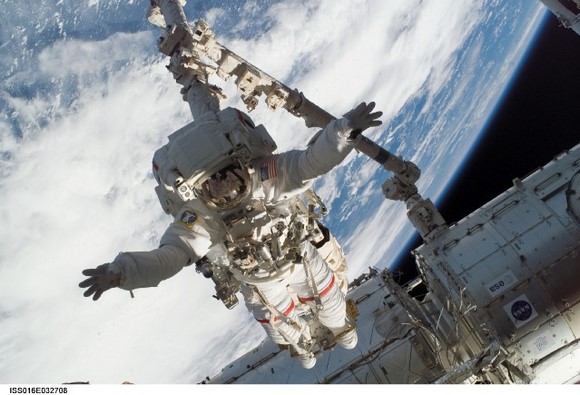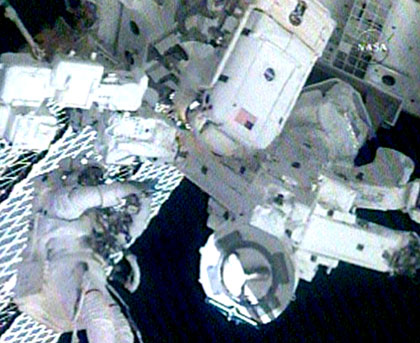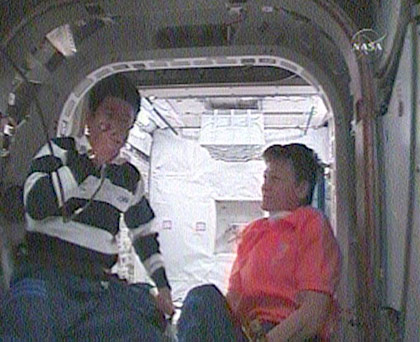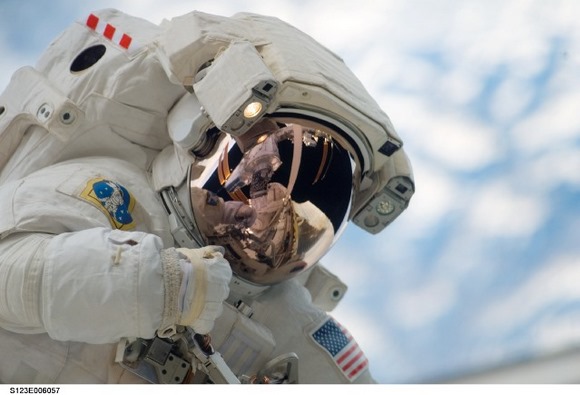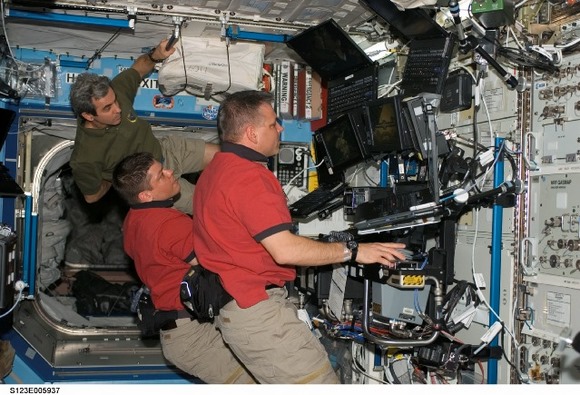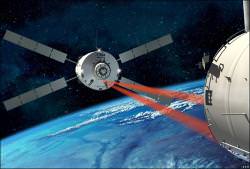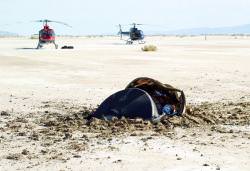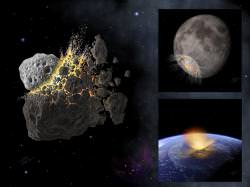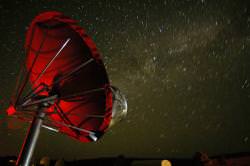A good idea gone bad. How do you describe the nuclear industry? At one time it answered everyone’s dreams, from nuclear powered airplanes to shopping mall heaters. James Dewar describes one of its roles in his book To the End of the Solar System – The Story of the Nuclear Rocket. In it, he shows how scientists’ practicalities came up short when confronted against politicians’ questions and environmentalists’ mores. For some, the benefits were huge and obvious. Others held different views.
After the dust settled from Hiroshima and Nagasaki, a new technology entered into the lexicon of our lives. Born amidst fear and death, the ability to split an atom spread into more benign and fruitful affairs. For after all’s said and done, this process is just another source of energy. As well, its raw materials occur quite naturally and regularly throughout the Earth’s crust and interior so humans aren’t so much inventing as engineering. Thus, smart humans learned to dig the material from the ground, concentrate it and put it to work.
Dewar’s book presents one type of this work; the use of the released energy to drive a vehicle through space. But, its not a technical review. Rather, the book’s main focus deals with the fascinating challenge of maintaining an expensive research project in a politically charged environment. The book shows that ideas were aplenty in the 1950s and a receptive audience happily encouraged research. However, often, once an idea passed beyond theory and into some sort of development, then costs rose even further. And, as written, the nuclear rocket program followed this sequence. In response, Dewar identifies a cabal, a small group of powerful politicians, who kept this program alive and kicking for over 20 years and through a number of administrations. Over this time, significant technical hurdles arose, budget constraints exploded and vociferous objections screamed. But these were countered and the rocket program matured. On termination, this program was ready to flight test a high specific impulse, throttlable, and re-startable propulsion system fully capable of transporting large masses to the Moon, Mars or the outer reaches of the our solar system. But, as Dewar concludes, the visionary supporters died and no young torch bearers had the desire to constantly carry and nurture this nascent capability along with the dreams of many a hopeful space traveller.
Though most historical reviews of a technical or political nature get quite dry, Dewar’s is different. He nicely bounces from technical challenges and the people who solved them and on to boardrooms where strategists plotted passages of bills. He even includes interesting conjectures on the definition and evolution of political power and bureaucracy in the United States. But, as to be expected for this subject, his book’s passages are decidedly non-fiction. There’s no flurry of adjectives or similes to lighten an image. He faithfully remains true to his sub-title in that his book is an insightful, competent and opinionated review of the development of the nuclear rocket.
For those interested in the historical aspect, this book does provide a great review of both the people involved and the technological developments. Further, Dewar’s career with the Atomic Energy Commission and the book’s 60 pages of reference confirm its veracity. But, Dewar’s inclusion of a number of appendices embellish as a wonderful icing on an already fantastic cake. To avoid obscuring the main storyline, the book’s later sections contain more technical depth, including fuel element design, specific impulse allowances, the benefits of liquid hydrogen and the Russian nuclear rocket program. But, maybe most valuable of all, it includes a section entitled Lessons for Program Managers and the Public. In it, Dewar uses the experiences of the rocket program to describe fundamentals on pushing projects so as they survive budgets and administration changes. Its contents will greatly help those who want to try advancing their personal, large, pet projects.
Dewar’s book would easily address those curious about this particular program. But, it certainly is opinionated with its positive support of the nuclear rocket and all those who championed it. There’s little room for fence sitters; those who think well of the idea of nuclear rockets will like this book, others will likely see little of value.
Note, the review copy was Apogee Book’s second edition published in 2007. The University Press of Kentucky published the original in 2003. No comparison was made between the two.
Stories of unrequited love make for good romance tales, but not so good for historical reviews. Yet, John Dewar’s book To the End of the Solar System – The Story of the Nuclear Rocket goes against this. He writes of a technology that is capable, fair and worthy yet never accepted. But, as with other great romance books, through it, the technology stays alive, awaiting a suitor to raise it on high.
Read more reviews online, or purchase a copy from Amazon.com

